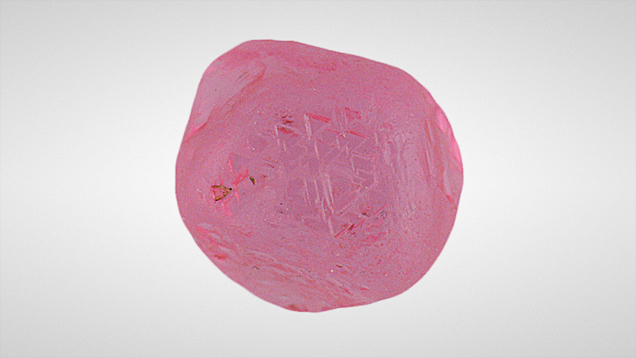Spinel Submitted as Diamond
January 31, 2014


Figure 2. In addition to trigons, the spinel displayed a conchoidal fracture (see arrow), a feature not found in diamond. Photomicrograph by Martha Martha Altobelli, © GIA. Magnified 40x.
The high-resolution UV-Vis spectrum displayed emission bands and absorption peaks not seen in natural diamond. Closer examination of the photoluminescence spectrum affirmed chromium peaks at 685, 687, 689, and 700 nm. Chromium causes the red/pink color in spinel but is not present in diamond. The narrow bandwidth of the 685 nm peak, along with the presence of the ~533 nm band in the UV-Vis spectrum, proved this was an untreated stone (S. Saeseaw et. al., “Distinguishing heated spinels from unheated natural spinels and from synthetic spinels: A short review of on-going research,” www.giathai.net/pdf/Heated_spinel_Identification_at_May_25_2009.pdf ). Other observations included a specific gravity of 3.45–3.48, consistent with spinel, as well as medium to strong red long-wave and short-wave UV. Though submitted for a diamond report, this stone was actually a natural pink spinel.
This finding serves as a reminder of the importance of both standard gemological techniques and advanced spectroscopy in identifying gem materials.
About the Authors
Martha Altobelli, Paul Johnson, and Kyaw Soe Moe are researchers at GIA's New York laboratory.



